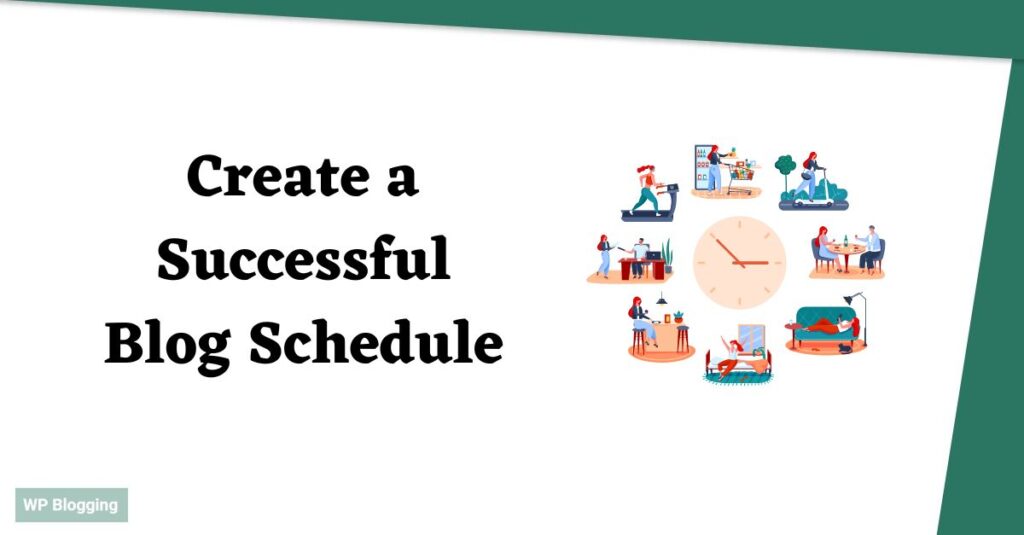In today’s digital age, maintaining a successful blog requires more than just quality content. It involves strategic planning, consistency, and a well-executed blog schedule.
Creating and adhering to a blog schedule can help you attract a larger audience, increase engagement, and ultimately improve your blog’s visibility in search engine rankings.
In this article, we will explore effective strategies and practical tips to help you establish and maintain a successful blog schedule that can skyrocket your online presence.

Table of Contents
ToggleWhy is a Blog Schedule Important?
A blog schedule serves as a roadmap for your content creation efforts. It provides structure and consistency, ensuring that you consistently deliver valuable posts to your audience.
Here are a few reasons why a blog schedule is crucial:
1. Consistency Builds Trust
When you establish a consistent blogging schedule, your audience knows what to expect from you. By consistently delivering high-quality content on a regular basis, you build trust with your readers.
They will come to rely on your blog as a reliable source of information, increasing their engagement and loyalty.
2. Search Engine Optimization (SEO) Benefits
Regularly publishing fresh content is essential for search engine optimization.
Search engines like Google reward websites that frequently update their content by ranking them higher in search results.
By sticking to a blog schedule, you increase your chances of being indexed more frequently, improving your visibility and organic traffic.
3. Efficient Workflow
A well-structured blog schedule allows you to plan your content creation process in advance.
It helps you allocate time for research, writing, editing, and promotion.
By streamlining your workflow, you can avoid last-minute stress and ensure that each blog post meets your quality standards.
Creating an Effective Blog Schedule
Now that we understand the importance of a blog schedule, let’s dive into the steps involved in creating an effective one.
1. Define Your Blogging Goals
Before establishing a schedule, it’s essential to define your blogging goals. Ask yourself what you want to achieve with your blog. Is it to educate, entertain, or inspire your audience?
Are you aiming to increase your website traffic, generate leads, or establish yourself as an industry expert?
Clearly defining your goals will help shape your content strategy and determine the frequency of your blog posts.
2. Know Your Target Audience
Understanding your target audience is crucial for creating relevant and engaging content.
Conduct market research and identify your audience’s preferences, interests, and pain points. This knowledge will guide your content creation process and ensure that your blog posts resonate with your readers.
Consider their demographics, such as age, location, and interests, to tailor your content to their needs.
3. Research Keyword Opportunities
Keyword research is a fundamental aspect of SEO. By identifying relevant keywords and incorporating them into your blog posts, you increase the likelihood of ranking higher in search engine results.
Utilize keyword research tools such as Google Keyword Planner or SEMrush to discover popular and low-competition keywords related to your niche.
Incorporate these keywords naturally into your content to boost your blog’s visibility.
4. Establish a Realistic Publishing Frequency
Consistency is key when it comes to blogging. However, it’s important to establish a realistic publishing frequency that aligns with your available resources and the quality of content you aim to produce.
It’s better to maintain a consistent schedule, even if it means publishing fewer posts per week, rather than overwhelming yourself and sacrificing content quality.
Start with a manageable publishing frequency and gradually increase it as you become more comfortable with your workflow.
5. Create a Content Calendar
A content calendar is a valuable tool for organizing your blog schedule. It helps you visualize your upcoming blog posts, plan content in advance, and maintain a consistent flow of ideas.
Use tools like Google Calendar or Trello to create a content calendar that includes publication dates, topics, keywords, and any additional notes or reminders.
This way, you can stay organized and ensure that your content aligns with your blogging goals.
6. Stick to Your Schedule
Once you have established your blog schedule, it’s essential to stick to it. Consistency is crucial for building an engaged audience and attracting search engine attention.
Treat your blog schedule as a priority and allocate dedicated time for content creation and promotion.
Create a routine and stay disciplined, even if it means setting aside specific hours each week for writing and editing.
7. Analyze and Adapt
Regularly evaluate the performance of your blog posts and analyze the feedback from your audience.
Use website analytics tools like Google Analytics to track key metrics such as page views, bounce rate, and average time spent on a page. Pay attention to the topics that resonate the most with your audience and adjust your content strategy accordingly.
Adaptation is essential for continuous improvement and staying relevant in the ever-evolving digital landscape.
Conclusion On Successful blog schedule
Creating and sticking to a successful blog schedule is a fundamental step toward achieving online success.
When you understand your audience, conduct thorough keyword research, and establish a consistent publishing frequency, you can enhance your blog’s visibility, attract a larger audience, and improve search engine rankings.
Remember to create a content calendar, stick to your schedule, and regularly analyze your performance to refine your content strategy.
With dedication, organization, and valuable content, you can set your blog apart and leave a lasting impression on your readers.
Suggested reads: